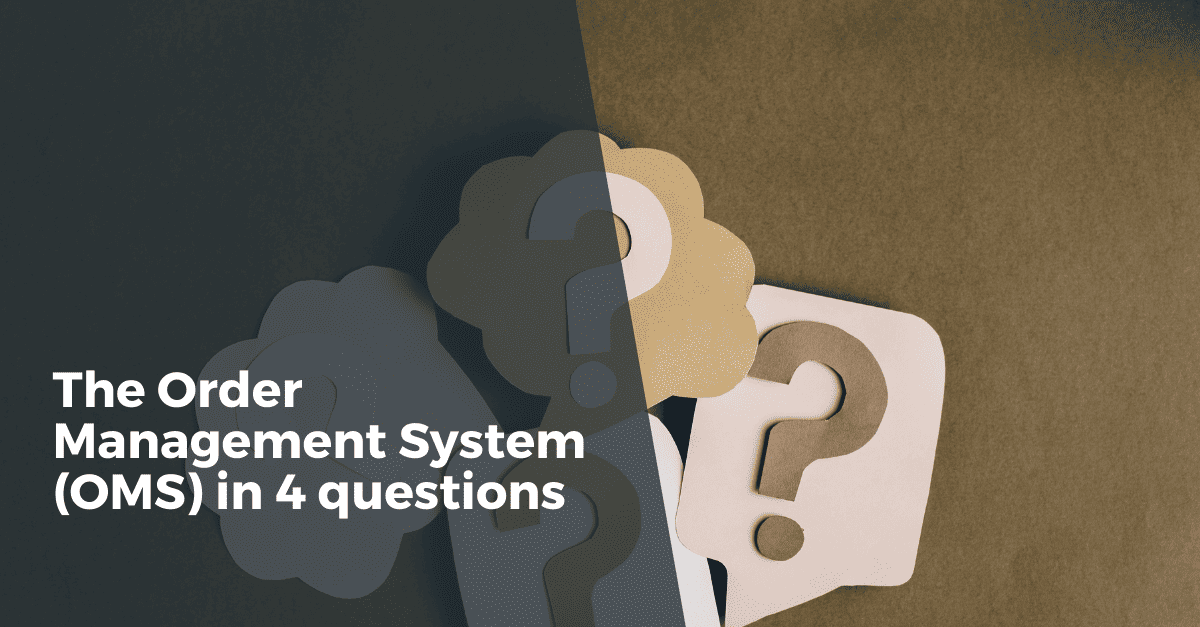
The Order Management System (OMS) in 4 questions
A real logistical and commercial asset, the Order Management System (OMS) is an omnichannel solution which benefits many retailers. This type of software enables the deployment of a complete omnichannel strategy by consolidating warehouse, store and online stock levels.
The result: Significantly improved performance and increased customer satisfaction.
To make things clearer, OneStock, the European leader in Order Management Systems and unified commerce, explains the OMS by answering 4 questions. So let’s get started!
What is an Order Management System?
The OMS is a solution that enables unified commerce. It’s aimed at retailers, whatever their vertical, who have a commercial website and a network of stores.
Once implemented, the OMS unifies all available stocks (e-commerce, warehouses, points of sale, suppliers, etc.) and offers the possibility of employing multiple services: Click & Collect, Reserve & Collect, Ship from Store, Order in Store, etc.
In this way, order management and logistics are optimised.
To function, the OMS relies on 2 key elements:
- Stock unification
- Order coordination
To learn more about the Order Management System, please read our dedicated blog post!
What are the possibilities offered by the OMS?
The Order Management System, by creating a synergy between the different channels, whether digital or in-store, facilitates a considerable increase in sales volume. Thanks to the unification of stock and the coordination of orders, the system then selects the most suitable omnichannel solution for serving those customer orders. The OMS manages the entire order and remains the principal conductor right up to the point of delivery
Let’s take a look at some of the omnichannel solutions that are popular with retailers:
- Order in Store: taking an order in store for one or more items that are not available on the shelf
- Ship from Store: the processing and shipping of an online order from the store’s stock
- Self-service returns: the possibility of returning a product ordered online to the store
- In store appointments: personalised shopping session with a dedicated advisor
- Click & Collect: the collection of a pre-paid online order in store
- Reserve & Collect: the reserving of an article which can then be tried on and checked by the customer in store, without payment in advance
- Delivery Promise: real-time display of delivery information (price, delivery time, carbon footprint)
How does the OMS work?
The way the OMS works can be summarised in 6 steps:
1. Creation of a unified stock
The OMS provides a unified view of all of the product references spread across the retailer’s stock points: warehouses, online, stores, suppliers, marketplaces, resellers, etc.
By connecting the stock across all sales channels, more references are available and so retailer’s sales and turnover increase.
Thanks to this operation, the problems of stock shortages are considerably reduced as a product available online can be sold in the store and vice versa.
2. The customer order
Once the stock is unified, the customer can order either online or directly from a physical store.
If an item is unavailable online or offline, the Order Management System allows the customer to check the availability of the item in another stock point within the network.
If we take as an example the case of a reference that is unavailable in a particular store, but is available in the warehouse, then the sales associate can place an order directly from the store (Order in Store) and offer the customer his choice of delivery: at home, to a pick up point, or in store (Click & Collect).
3. Order coordination
When a customer places an order, the OMS selects the most appropriate point of sale.
to deal with it..
It’s possible to set different parameters according to the needs of the store. For example, for a product that is in high demand, the warehouse stock can be given priority over the store stock.
4. Payment and validation of the order
The OMS and the retailer’s payment system are connected via API.
Once the order has been validated, a unique number is assigned allowing tracking until delivery.
5. Shipment of items
The OMS handles all of the elements required for the shipment of the order:
- Connecting the store with a carrier according to the delivery method chosen by the customer
- Sending preparation orders to the relevant operators
- Printing of transport labels (shipping and return)
- Allowing for the possibility of tracking the delivery stages
6. Management of returns
Often costly and time-consuming for retailers, product returns regularly pose difficulties. The OMS is a very effective system for managing reverse logistics and getting items back on sale as quickly as possible.
By connecting all of the stock points, it allows omnichannel management of returns. All the different returns methods are managed: in-store, in the warehouse via a pre-printed label, via customer service.
Once the product is returned, the OMS manages 3 steps:
- Generating the refund
- Returning the product to stock according to the rules established by the store
- Replenishing stores that are out of stock on certain items
What are the advantages of the OMS?
The Order Management System offers considerable advantages both for the retailer and for the customer.
Benefits for the retailer
- Rapid ROI: on average 25% more online turnover and ROI achieved in 4 months
- Significant reduction in stock shortages
- Improved stock clearance, especially end-of-season stock
- Improvement of logistic flows
- Optimisation of transport costs
- Building customer loyalty
- Creation of web to store traffic
Benefits for the customer
- A multitude of omnichannel services offered: Click & Collect, Self-service returns, RDV in store, Reserve & Collect..
- Potential reduction in delivery costs
- Clear information about product availability
- The possibility to try a product available online before buying it
- Digitalised and personalised in-store experience
You’re now an Order Management System expert! Are you interested in our solution? Contact us now, we’ll be delighted to support you in your project.


